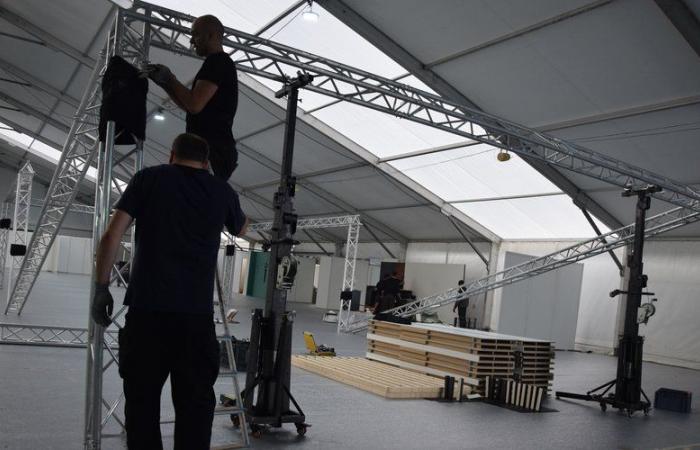
the essential
As the Rodez Home Fair opens on Friday, tiny houses and other small-scale individual houses seem to be on the rise while prices are at their highest.
Sluggish real estate market, rising construction costs, energy prices, mortgage rates… Housing has experienced more favorable periods than the start of the 2020 decade. However, professionals are not becoming demoralized, and naturally, consumption patterns are evolving to cope with this context and the Rodez Habitat Fair, which is organized from Friday November 8 to Monday November 11 will witness this. Among these ideas, comes the thought of optimizing space, and building… smaller!
With an example in this area, the phenomenon of “tiny houses”, literally “tiny house” in the language of Shakespeare. And Aveyron is no exception to this trend. François Bousquet, head of the specialized company Penates, based in Quins, understands this well. “There is in particular the idea of coping with rising energy costs, but also the desire to find yourself in a smaller space to spend less time on work or cleaning”observes the founder of the company. In summary, have a small house, enjoy the outdoors and save time. However, this model of removable constructions at a controlled cost – between 45 and 55,000 euros notes the person concerned – is not aimed at everyone. At least, with regard to the idea of making it your main home, particularly because of its size, 20 m² maximum floor space, with spaces optimized by the development of mezzanines. “Some use it to invest. They install a tiny at the bottom of their garden and take the opportunity to rent it, specifies François Bousquet. For others, it is the way to set up an office or premises on their property, which still remains independent from their home.”
Houses of 90 m²
But tiny house builders are not the only ones to see an interest in developing small-scale homes. In a more classic model, individual houses are also considered differently at the moment. “Today, we are building smaller, that’s clear. But it’s not because of ecological desires, it’s clearly due to the financial side”estimates Jean-Charles Carel, director of the company HC construction, based in Druelle-Balsac. Thus, at present, individual houses are mainly built on an area ranging from 90 to 100 m², whereas the conventional average is around 120 m². “The primary goal is to succeed in building, particularly for first-time buyers where the requirements in terms of financial contribution are significant”continues Jean-Charles Carel. In a sector particularly in difficulty in recent months, we are adapting, while the public authorities currently seem more favorable to renovation than construction, with one example, the zero net artificialization law.
Straw as insulation
However, the ecological aspect can still be part of this construction approach. Halfway between the tiny house and the classic individual house, Easypaille offers wooden frame modules insulated with straw. “It's not the size that matters, but rather the orientation we give to its construction “laughs Laurent Garrigues, creator of the company. His idea was to bring this agricultural product used since the dawn of time up to date and take advantage of one of its virtues, its effectiveness as an insulator. “On a house of 120 m², you only need to count on heating €200 per year”, rejoices the creator of Easypaille, based between Rignac and Rieupeyroux. So, does this model represent the future of housing? “It’s already the present!replies Laurent Garrigues. The idea is to reduce operating costs without increasing construction costs, it's in keeping with the times.” Hoping all the same that 2025 will be a favorable year, with the continued fall in interest rates.
Eco-friendly homes: development based on biosourced products is making its mark
Don't talk to him about bricks and concrete blocks, he doesn't believe in them anymore. However, Jean-Christian Luc still thinks that housing has a future. At the head of the construction materials store Maison Éco-naturelle, he is betting on the construction of houses based on biosourced products. Its leitmotif: wood fiber, hemp and other natural paints rather than using conventional products, which are less environmentally friendly. And the subject is in vogue. “ Nowadays, people pay more and more attention to the quality of the material, he assures. With the rise in the cost of materials and energy prices, everyone is looking for performance in their home.” So, its concept seems equipped to face the current concept, also marked by ever more restrictive construction standards. “These are based on a scientific foundation, not a political one. Today, we must rethink our model. Especially since these products are manufactured in France and create jobs locally…”continues Jean-Christian Luc, who firmly believes in a revolution in this sector.





